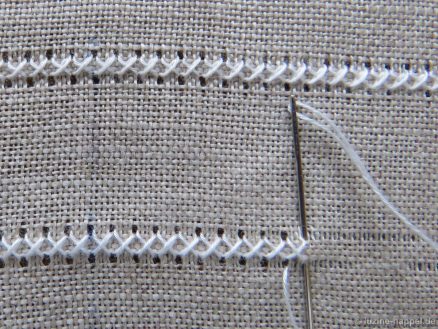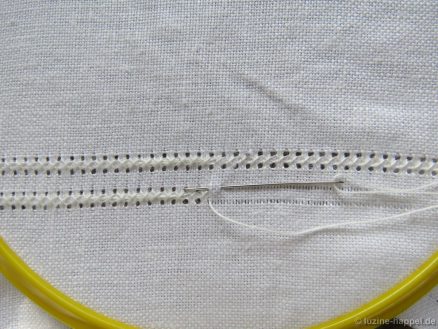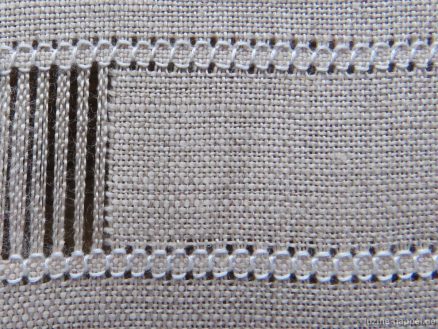Embroiderers have asked me questions regarding the order of the prep work for Peahole and needle-weaving hems.
They want to know why the two rows of Four-Sided stitches are made first before withdrawing the threads between (method 1),
and not after withdrawing all the threads (method 2) as some other authors show.
My response:
Of course, using method 2 it would be easier to check that one always takes up the same vertical threads on the lower row that were taken up on the upper row to establish the needed thread bundles. Errors in bundling could be avoided.
But working Four-Sided stitches along a section without the bordering horizontal threads, because they are withdrawn already, is much more difficult – especially in wider hems or when working without a hoop.
So, after weighing the pros and cons, in my mind the advantage of method 1 predominates.
This is the reason why I explain to withdraw only two threads with a distance of four threads between to establish the first row of Four-sided stitches, and then, at the desired distance from the first, doing the same to establish the second row of Four-sided stitches.
Make sure, that you always take up the same vertical threads as you have taken in the upper row. Check it every few stitches! (It is easier to check it, when the previously worked row is on top of the new row and not below it.)
The remaining threads between are withdrawn after finishing both Four-Sided stitch rows. In addition, it is important to work all stitches using a hoop.







So mach ich das auch. Erst die Kästenstiche und dann den Fadenauszug. Sticken sie das Erbsloch auch immer im Rahmen?
Gruß
Anja
Ja, wenn man es im Rahmen sickt, wird es viel gleichmäßiger und die Stickarbeit geht aus insgesamt schneller von der Hand. Allerdings sollet der Rahmen nicht zu groß sein. Gute Erfahrungen habe ich mit dem 12,5 cm Spannrahmen gemacht – groß genug, um nicht zu oft umspannen zu müssen, aber auch klein genug, um gut sticken zu können.
Danke für die schnellen Antworten.
Grüße
Anja